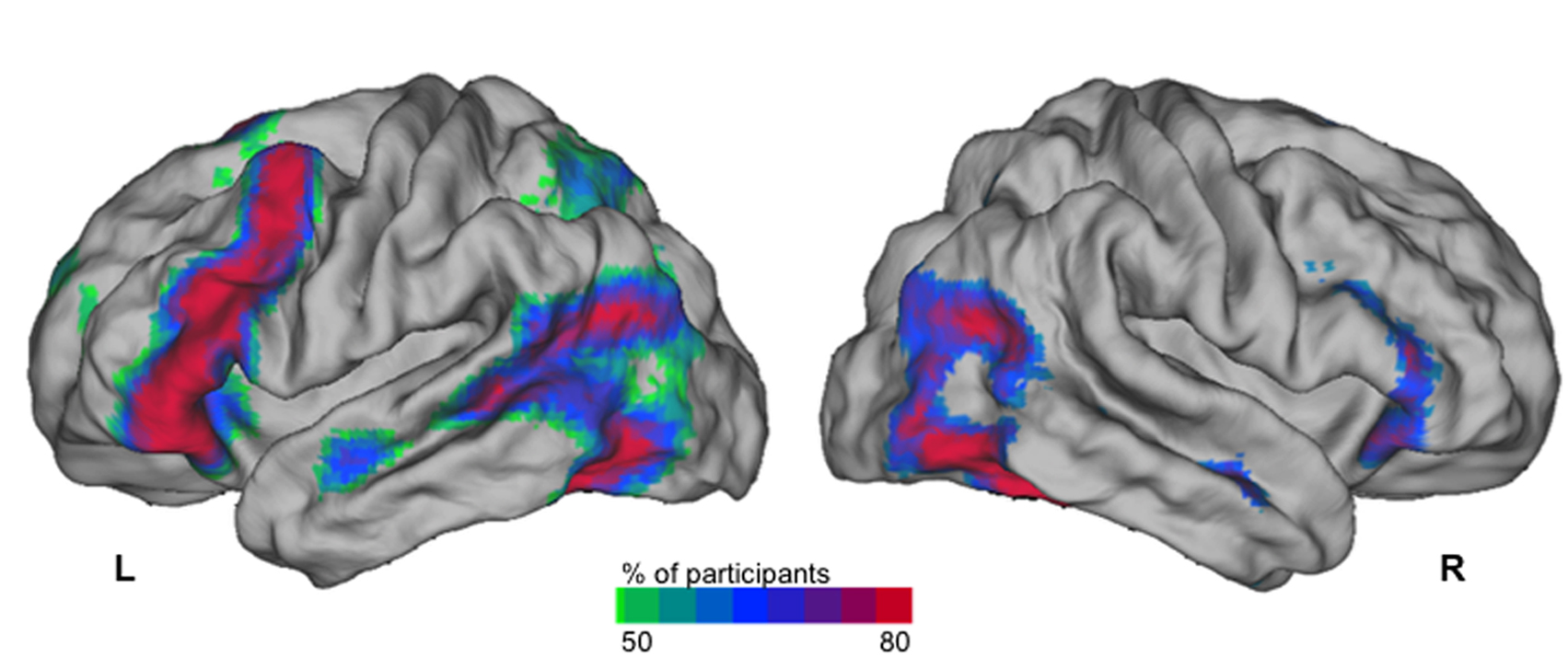“Do left-handed people speak with their right hemisphere?” A seemingly absurd
question. And yet, the vast majority of the population (90%) prefers to use
their right hand. In doing so, these people activate their left cerebral
hemisphere, since motor control behavior is “crossed”. On the other hand, many
studies have shown that the network of brain areas controlling speech is also
lateralized, so that it is situated on the left in 90% of subjects. Does the
location of language areas thus correlate with being right or left handed?
To find out, researchers from the Neurofunctional Imaging Group
(CNRS/CEA-I2BM/Université de Bordeaux) recruited nearly three hundred
participants, half of them left-handed. All were subjected to functional MRI
while they performed tests of language. Three major modes of lateralization of
language areas thus emerged. The vast majority of subjects, whether left- or
right-handed, show a “typical” lateralization with a largely dominant left
hemisphere. In the “ambilateral” mode, which only concerns a minority of left-
and right-handed individuals, neither hemisphere clearly dominates. Finally, the
right hemisphere dominates in 7% of left-handed people. Statistical analysis
shows that the correlation between the dominant hemisphere for manual activities
and that for language is the result of chance, except for this small fraction of
the population (less than 1% of the total) in which the right hemisphere is
dominant for both language and for the hand.
What is left now is to understand the origin of this “very atypical”
lateralization of language. More generally, this result shows the importance of
recruiting cohorts “enriched” with left-handed people for revealing sources of
variability in the structural and functional bases of the human brain.